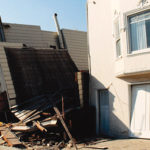In late July 2017, the Los Angeles County Superior Court finally dropped the gavel on Mohamed Hadid, sentencing the mega-mansion builder – and father of supermodels Bella and Gigi Hadid – to three years of probation, 200 hours of community service, and more than $3,000 in fines for unpermitted construction on a 30,000 square foot home perched over a Bel Air, Calif. hillside.
Dubbed by Curbed L.A. as the country’s “most illegal mansion,” the sprawling compound boasted pool decks, an IMAX theater, and an entire ground floor that city planners said were never approved. Between 2011 and 2015, ownership of the property changed hands five times even as Hadid stayed on as a developer, allegedly engaging in unpermitted grading and hiding illegal construction behind tarps and taped over doors and windows.
While this high-profile case in unpermitted construction may seem uncommon, the circumstances unfortunately are not. Across the country, homeowners, developers and contractors still regularly engage in unpermitted repairs, improvements and illegal builds from the ground-up.
“Any addition on a house has to go through the permitting process, but we continue to see issues with some contractors not pulling permits before beginning work,” says Jon Levey, Simpson Strong-Tie territory manager for West Florida, South Florida, and the Florida Keys. The lack of permitting in the Sunshine State has gotten so bad that it warranted an entire session at the 2017 Building Officials Association of Florida annual conference and expo.
Technically, almost any repair or home improvement completed on a residence needs to be permitted to avoid unsafe conditions and subsequent code violations. While this may, at times, seem like an added nuisance, it is intended to ensure the project is done safely, which protects everyone involved. In Los Angeles, for example, permits are required for any alteration, major or minor. Safety is the primary reason why, as unpermitted work has not been reviewed and approved by building inspectors for the well-being of either the contractors building it, or the homeowners who will eventually live with it.
According to Levey, the continued shortage of skilled and unskilled construction labor is exacerbating the issue in an industry already running razor thin on margins. “It’s a vicious cycle where contractors bid very low and don’t leave a lot of extra room for expenses,” Levey says. “Since labor is so hard to come by, from framers to drywall to finish guys, there are often people not fully qualified or not insured or bonded that are hired to complete the job.”
Avoiding building codes and the permitting process is one way for bottom-bid contractors to contain costs or conceal a lack of credentials. In the end, both builders and homeowners typically lose out, either from getting busted or discovering that a home cannot be sold until it is brought into compliance. “Even if it’s not caught in the moment, this stuff can really come back to haunt future homeowners and contractors when the county and city eventually come back to inspect the home,” Levey says.
While it may seem like the well-heeled Hadid got off easy for skirting permits, remediation of non-permitted construction work is neither easy, nor cheap. Most municipalities follow similar guidelines to those posted by the City of San Pablo: bring all unpermitted construction up to code or demolish the structure.
As a partner to suppliers, builders, and owners across a property life cycle, Simpson Strong-Tie urges all parties to follow the letter of the law when it comes to permitting both new construction and repairs and improvements. “It comes down to dedication and awareness all the way from the developer and contractor down to the homeowner,” Levey says. “If you want to do anything structural at your home, you must go through your municipality and pull permits and go through the right channels to get things done.”
If not, the next room you see might very well be a courtroom.






